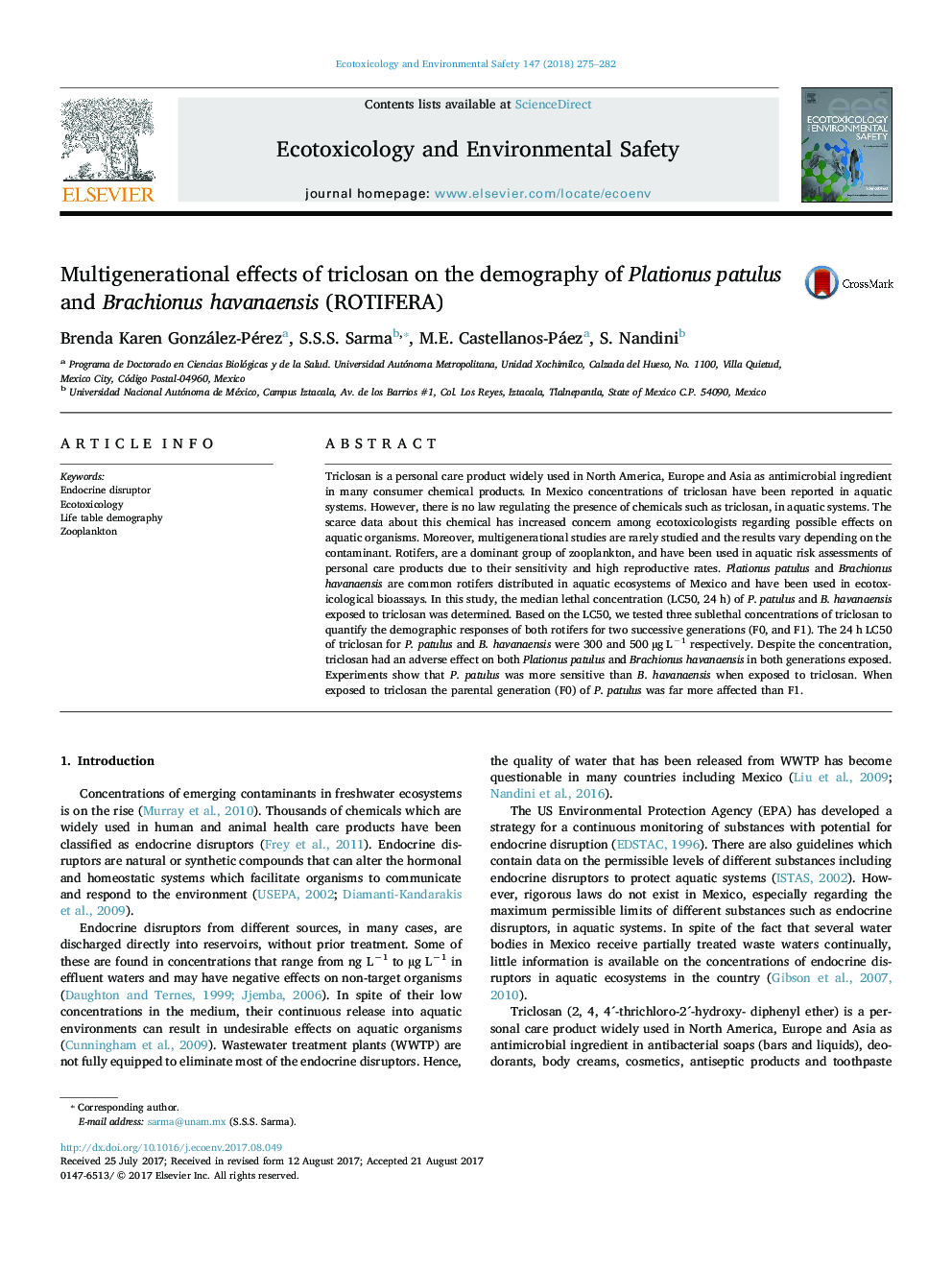| کد مقاله | کد نشریه | سال انتشار | مقاله انگلیسی | نسخه تمام متن |
|---|---|---|---|---|
| 5747806 | 1618917 | 2018 | 8 صفحه PDF | دانلود رایگان |

- Triclosan had an adverse effect on both rotifer species in both generations exposed, regardless of the concentration.
- Chronic experiments show that Plationus patulus was more sensitive than Brachionus havanaensis when exposed to triclosan.
- The parental generation (F0) of P. patulus was far more affected when exposed to triclosan than its offspring (F1).
Triclosan is a personal care product widely used in North America, Europe and Asia as antimicrobial ingredient in many consumer chemical products. In Mexico concentrations of triclosan have been reported in aquatic systems. However, there is no law regulating the presence of chemicals such as triclosan, in aquatic systems. The scarce data about this chemical has increased concern among ecotoxicologists regarding possible effects on aquatic organisms. Moreover, multigenerational studies are rarely studied and the results vary depending on the contaminant. Rotifers, are a dominant group of zooplankton, and have been used in aquatic risk assessments of personal care products due to their sensitivity and high reproductive rates. Plationus patulus and Brachionus havanaensis are common rotifers distributed in aquatic ecosystems of Mexico and have been used in ecotoxicological bioassays. In this study, the median lethal concentration (LC50, 24 h) of P. patulus and B. havanaensis exposed to triclosan was determined. Based on the LC50, we tested three sublethal concentrations of triclosan to quantify the demographic responses of both rotifers for two successive generations (F0, and F1). The 24 h LC50 of triclosan for P. patulus and B. havanaensis were 300 and 500 µg Lâ1 respectively. Despite the concentration, triclosan had an adverse effect on both Plationus patulus and Brachionus havanaensis in both generations exposed. Experiments show that P. patulus was more sensitive than B. havanaensis when exposed to triclosan. When exposed to triclosan the parental generation (F0) of P. patulus was far more affected than F1.
133
Journal: Ecotoxicology and Environmental Safety - Volume 147, January 2018, Pages 275-282